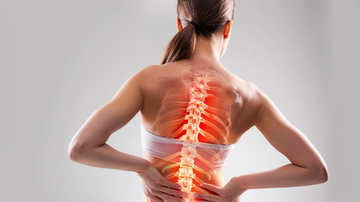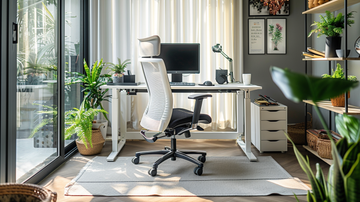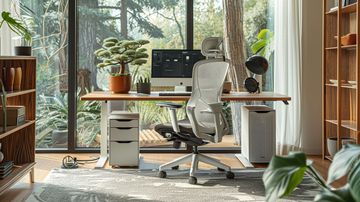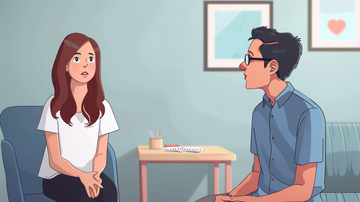Introduction
Back pain is an extremely common health issue affecting millions of people worldwide. According to the World Health Organization (WHO), low back pain affected an estimated 619 million people globally in 2020, making it one of the leading causes of disability [1]. The CDC also reports that in 2019, 39% of American adults experienced back pain [2]. With such a high prevalence, back pain causes significant economic and social burdens. While there are many potential causes and treatments for back pain, there are also simple self-care tips that can provide relief for many sufferers.
[1] https://www.who.int/news-room/fact-sheets/detail/low-back-pain [2] https://www.cdc.gov/nchs/products/databriefs/db415.htmCauses of Back Pain
There are several common causes of back pain, including:
Muscle and ligament strains - Straining the muscles and ligaments in the back through overuse, improper lifting, or poor posture is a very common cause of back pain. This can lead to strained muscles or ligaments which become inflamed and painful. Proper lifting techniques and improving posture can help prevent muscle strains.
Bulging or ruptured discs - The discs between the vertebrae in the spine can become damaged and bulge or rupture. This puts pressure on the nerves and causes pain. Disc injuries often occur from improper lifting or twisting that strains the disc. Maintaining proper posture and core strength can help prevent disc problems.
Arthritis - Osteoarthritis or rheumatoid arthritis in the spine can lead to back pain as the cartilage breaks down in the joints. The inflammation and bone spur formation puts pressure on nerves. Weight loss and low-impact exercise can help manage arthritic back pain.
Osteoporosis - Weak and brittle bones from osteoporosis can cause vertebrae to fracture or collapse, leading to severe back pain. Getting adequate calcium and vitamin D can help maintain bone density and prevent osteoporotic fractures.
Lifestyle Tips
Making some adjustments to your daily lifestyle can help prevent and ease back pain. Here are some tips:
Maintain good posture. Sitting or standing with poor posture puts strain on your back. Keep your shoulders back, avoid slouching or slumping, and use ergonomic chairs and workstations when possible. Proper posture takes pressure off your spine and reduces back pain. (Source)
Lose weight if overweight. Excess weight, especially around the abdomen, can put extra stress on your lower back. Losing even a few pounds can help relieve back pressure and pain. Consult your doctor about safe weight loss strategies. (Source)
Regular low-impact exercise. Low-impact cardio like walking, swimming, or cycling can strengthen core muscles and improve flexibility. This takes pressure off your back. Always check with your doctor before starting any new exercise routine. Gradually increase activity to avoid injury. (Source)
Mattress and Sleep
Choosing the right mattress is crucial for managing back pain. The mattress should provide adequate support for the spine while relieving pressure on sensitive areas.
According to The Sleep Foundation, medium-firm mattresses are usually best for back pain. They provide a balance of contouring and support. Memory foam and latex mattresses conform closely to the body to alleviate pressure points.
Innerspring mattresses with pocketed coils also provide good support, especially when paired with a comfort layer like memory foam. Look for coils with a gauge of 14.5 or lower for optimal support.
Proper pillow positioning is also important. Use a pillow that fills in the gap between your neck and mattress to keep your spine aligned. Stomach sleepers may need a thinner pillow to avoid arching the neck.
Improving Posture
Improving your posture is one of the most effective ways to ease back pain. Sitting and standing with poor posture puts strain on your back muscles and spine, leading to pain and discomfort. Focus on these areas to improve your posture:
Sitting Upright
When sitting, keep your ears, shoulders, and hips aligned vertically. Avoid slouching or leaning forward in your chair. Use a small pillow or lumbar support for your lower back. Take breaks from sitting every 30 minutes to stand, stretch, and move around (Harvard Health).
Standing Tall
Stand upright with your head over your shoulders and hips. Keep your shoulders back and down, chest lifted, and core engaged. Wear supportive shoes and avoid locking your knees. Shift your weight from one foot to the other periodically.
Correct Lifting Form
Use proper form when lifting heavy objects. Keep your back straight and knees bent while lifting with your legs. Hold objects close to your body and avoid twisting. Ask for help moving very large items. Keep your core tight and head facing forward (Harvard Health).
Stretching and Strengthening
Performing targeted stretches and strengthening exercises can help ease back pain and prevent future flare ups. Here are some effective stretches and strengthening exercises to try:
Cat-Cow Pose - Get on your hands and knees. Inhale as you arch your back and lift your head upwards. Exhale as you round your back and tuck your chin towards your chest. Repeat 5-10 times. This stretch lengthens the spine and brings movement to the back muscles. Stretching for Back Pain Relief
Plank - Hold the top of a push-up position, engaging your core. Start with holding for 10-30 seconds and gradually increase your hold time. This strengthens the core muscles to support the back. Back exercises in 15 minutes a day
Bird Dog - From all fours, extend one arm forward and the opposite leg back, squeezing the glutes. Hold for 5-10 seconds then switch sides. Repeat 5-10 times per side. This stabilizes the low back. Back exercises in 15 minutes a day
Knee to Chest - Lying on your back, hug one knee into your chest. Hold for 30 seconds, then switch legs. Repeat 2-3 times per leg. This provides a gentle lower back stretch.
Hot and Cold Therapy
Both heat and ice can be effective for easing back pain. Using heat and ice at the right times can help reduce inflammation, relax muscles, and speed healing.
Heat therapy increases blood flow, relaxes tight muscles, and loosens stiff joints. The increased circulation brings oxygen and nutrients that help heal damaged tissue. Heat also blocks pain signals from tense muscles to the brain. Heating pads, hot packs, hot tubs, and warm showers are common heat sources for back pain relief.
According to Spine-Health, heat therapy is most helpful during back pain flares caused by muscle spasms or overexertion. Apply heat for 20 minutes several times a day to maximize benefits.
Ice therapy constricts blood vessels, slowing circulation and reducing inflammation and swelling. The cold also numbs nerve endings, disrupting pain signals. Ice packs, cold compresses, and ice massages are common cold therapy treatments.
Per the Sciatica.com article, ice therapy tends to work best for acute back injuries to reduce inflammation. It's also helpful after exercise and physical activity. Apply an ice pack for 10-15 minutes each hour during the first 48 hours after an injury.
Over-the-Counter Medications
Over-the-counter (OTC) medications can provide relief for mild to moderate back pain. Two of the most common types used are acetaminophen and non-steroidal anti-inflammatory drugs (NSAIDs).
Acetaminophen (Tylenol) is an effective pain reliever and fever reducer. It works by blocking pain signals in the brain. Acetaminophen comes in tablet, capsule, or liquid form. Follow dosage instructions carefully, as taking too much can cause liver damage. Acetaminophen does not reduce inflammation.
NSAIDs like ibuprofen (Advil, Motrin) and naproxen (Aleve) can relieve pain and inflammation. They work by blocking the production of prostaglandins, which are chemicals that promote inflammation. NSAIDs come in tablet, capsule, or liquid form. They may cause side effects like stomach upset, bleeding, or kidney problems in some people, especially with long-term use. NSAIDs should be taken with food.1
For many people, OTC medications provide sufficient back pain relief. But consult a doctor if pain persists beyond a few days or gets worse. Prescription medications may be needed for more severe back pain.
When to See a Doctor
While most back pain will resolve on its own within a few days or weeks, there are some instances where you should see a doctor right away. According to the University of Maryland Medical System[1], you should call a doctor if your back pain has persisted for over a week. Mayo Clinic[2] also recommends seeing a doctor if your back pain is accompanied by fever, which could indicate an underlying infection or other condition requiring medical attention.
Some other signs that warrant a doctor visit as soon as possible include:[1]
- Loss of bowel or bladder control
- Numbness or tingling in the legs
- Difficulty standing or walking
- Pain after a major trauma like a car accident
Seeing a doctor right away for prolonged or severe back pain can help diagnose and properly treat any underlying causes. Your doctor may order imaging tests or refer you to a specialist like an orthopedist, neurologist, or spine surgeon if needed.[3]
Conclusion
In summary, there are many tips that can help ease back pain and provide relief. Trying mattresses designed for back support, maintaining good posture, stretching and strengthening core muscles, and using hot/cold therapies can make a big difference. Over-the-counter medications like acetaminophen and NSAIDs can also temporarily reduce pain and inflammation.
If you are suffering from back pain, I encourage you to try some of these tips and find what works best for you. Small lifestyle changes and self-care can go a long way in managing back discomfort. However, if pain persists or worsens, it's important to see a doctor to rule out any underlying medical issues.
With some patience and consistency applying these tips, you can hopefully find some relief from back pain and get back to your everyday activities.









